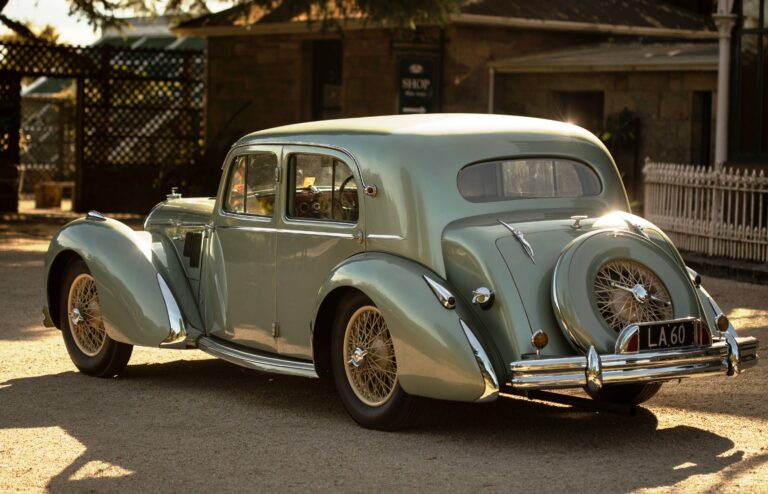The Auckland Mustang Owners Club bolted off with the top two prizes at the 2020 Intermarque Concours d’Elegance, winning both the team prize and individual prizes at the Ellerslie Classic Car Show. The teams win made them the host club of the 50th anniversary show in February 2021. Here’s Classic Car’s story on the winning Teams Event cars, and here is the story on the winning Masters Class car.
By Ian Parkes, photography by Strong Style Photo
You’d have to think entering a brace of 1969 fastbacks in the same colour would be worthy of a few extra style points for the Auckland Mustang Owners Club, but no, these cars had to win the Teams Event at the Intermarque Concours d’Elegance on their combined individual merits.
There’s no doubt they make a striking pair in the popular Acapulco Blue colour but the appreciative eye soon turns to an entertaining game of spot the difference. There are quite a few to be found. In fact, it’s almost surprising they look so similar, given the long list of options available to Ford buyers 50 years ago and the personalization that owners make over the intervening decades.
Both cars have undergone a bare-metal restoration and in each case most of the work was done by aircraft engineers. One of these cars has been a restoration project for 32 years. It was completed just weeks before the New Zealand Classic Car Magazine Ellerslie Classic Car Show. A fresh restoration does give a car an edge in the cleanliness stakes — a fundamental element of concours success. The longest drive Mark Pritchard’s car had undertaken since he finished it was off the trailer and into the competition circle — Mark feeling each ping of gravel in the wheel wells like a physical blow.

POINT SCORING
That Chris Dwen’s car scored just six fewer points in the team’s combined winning total score of 1066 points is a tribute to its previous owner and restorer Wayne Carter, the other Air New Zealand engineer, as well as to Chris, who prepped the car with help from his brother, Brett. Chris has worked on the car almost continuously since he bought it from Wayne two years ago, while also clocking up plenty of road miles.
Chris ran his own car workshop in Browns Bay for many years. He has gone over every mechanical aspect of his Mustang with a fine-tooth comb — as well as the obligatory toothbrush and cotton buds prior to the show.
“He decided he wanted a car he didn’t have to work on,” says Sue Dwen. “Then he spent the next two years working on it.”
Chris originally wanted to buy a ’66 Mustang and looked for one for a long time. He was discouraged by some of the horror stories about cars brought in from overseas and eventually decided on a different route to Mustang ownership. Brett said his friend Wayne might sell his ’69 Sportsroof and, as Wayne had a great reputation for the quality of his restorations, Chris had much more confidence in this option. He’s delighted with his decision, as his very thorough assessment of the car since then has simply confirmed that almost everything was as it should be.
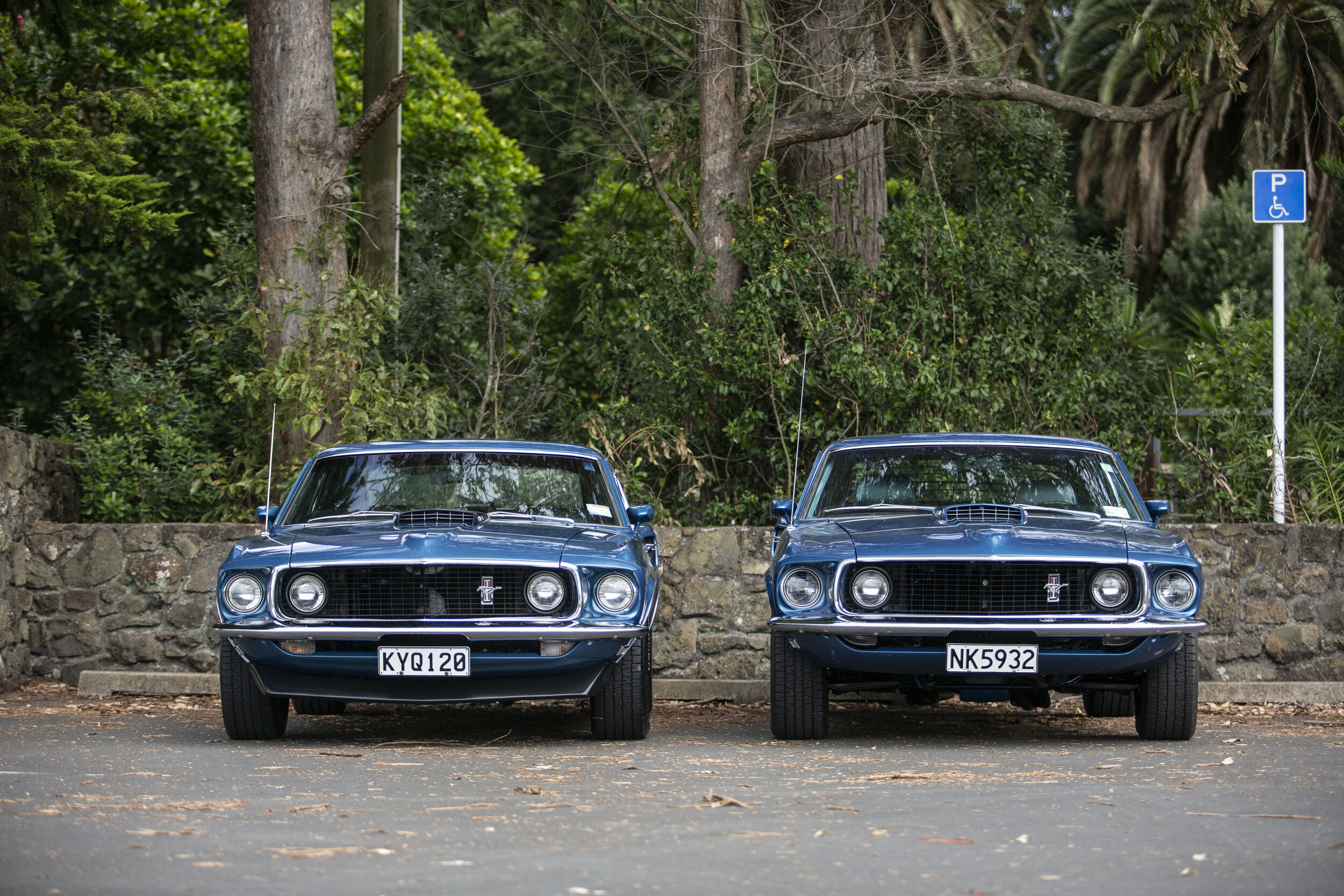
THROUGH GOING-OVER
Chris bought the car from Wayne after its 12-year restoration, on a provision that he could also have the four-speed Toploader gearbox Wayne had in his workshop. The car had a three-speeder at the time. Chris rebuilt and fitted the four-speeder, replaced a gasket on the rebuilt diff, retorqued the heads, and replaced the steering-ram ball joint. He also fitted refinements such as a cooling-system header tank and an electric fan, although that came off for the concours competition because any non-period additions lose points.
Chris lowered the front suspension by 30mm as the rear had already been lowered and he says it drives better as a result. He dynoed the car to make sure it was fuelling right, and says the next step will be to do a wheel alignment using Shelby Mustang numbers.
Chris made some other changes out of personal preference, such as the decision to paint the bonnet scoop black to match the chin spoiler and rear deck spoiler. He also fitted the optional 351 badges on the scoop.
“It gives it more of a muscle car look that suits this car’s lines,” he explains.
The slightly lower ride height of Chris’s car is noticeable when it is parked alongside Mark’s one, and its ground-hugging stance is accentuated by the chin spoiler. Mark decided not to refit the spoilers, preferring to keep the lines clean, although his car sports a rear window louvre screen. They were popular at the time and are still practical in our harsh sunlight; this car won’t see much rain. Similarly, his car has a plain rear valance, the exhaust dumping its gases out of sight, while Chris’s has the standard cut-outs for the four exhaust pipes.


BLUE ALL THE WAY THROUGH
Under the skin there are more and bigger differences. Mark’s car has the big block 390-cubic-inch (6.4-litre) engine mated to the four-speed Toploader gearbox. It also has stylish metallic-blue upholstery and door cards with blue carpets and headlining, all bought as kits from the States.
As soon as she saw it, Sue pronounced herself a big fan of the shiny blue upholstery.
“Look at that; it’s so ’60s! Chris, that’s what we’ll have do next,” she said, provoking an incredulous response from Chris. He thought this was a fine comment coming from someone who always asked why he was working on a car that apparently didn’t need it.
Mark was pleased, as he says he had planned originally to fit the plusher seats from the Mach 1 model in black vinyl. He had even bought a set of black covers before deciding to stick with the original chairs in the original blue. He bought new seat squab cushions as the original ones had crushed into the springs, and did the upholstery work himself. The seat belts are a different shade of blue. Mark says he could have bought webbing in a shade that toned better but instead he went for the material approved for use in New Zealand in the closest shade he could find.
Mark has done all the work on his car, apart from the panel work and paint. He began the project 32 years ago when he and a few friends decided to import a car each to do up. He had originally wanted a ’67 Mustang but the right one didn’t come along and the ’69 was his next favourite.
“It has the right proportions and is a favourite with a lot of people,” he tells us.
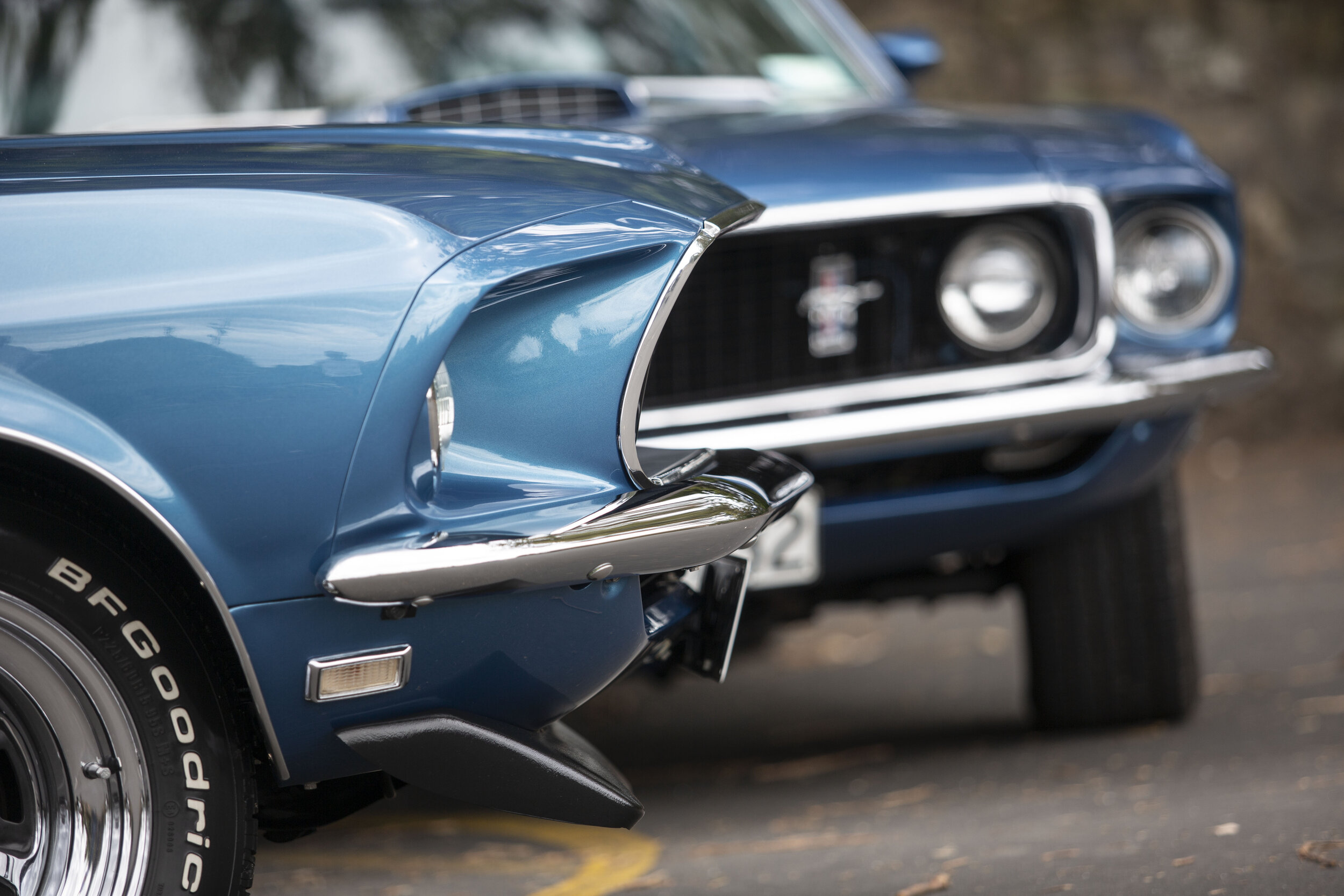
BIGGER NOT ALWAYS BETTER
Mustangs, as is the American way, were tweaked for every new model year and bodyshells were modified every couple of years. The 2+2 Mustang, based on the Ford Falcon platform, was an instant hit when it was launched in mid 1964. More than a million were sold over its first 18 months. Ford gave the car a new and slightly larger bodyshell in 1967. Sporting just a few slight tweaks for ’68, that model achieved great fame after featuring in the film Bullitt. One of the cars used in that film recently sold for US$3.74M.
The next new bodyshell came in 1969 — nearly four inches longer. The same year saw the first of the Mach 1 models, which featured a higher level of trim and superseded the GT. It was also the first year of the potent Boss Mustangs, designed in-house to compete in Trans-Am racing — and to elbow out the Shelby-crafted performance models. Another name entered the Ford lexicon that year when the fastback was rechristened the ‘Sportsroof’, as featured here — apparently an attempt to make it sound cooler and boost sales.
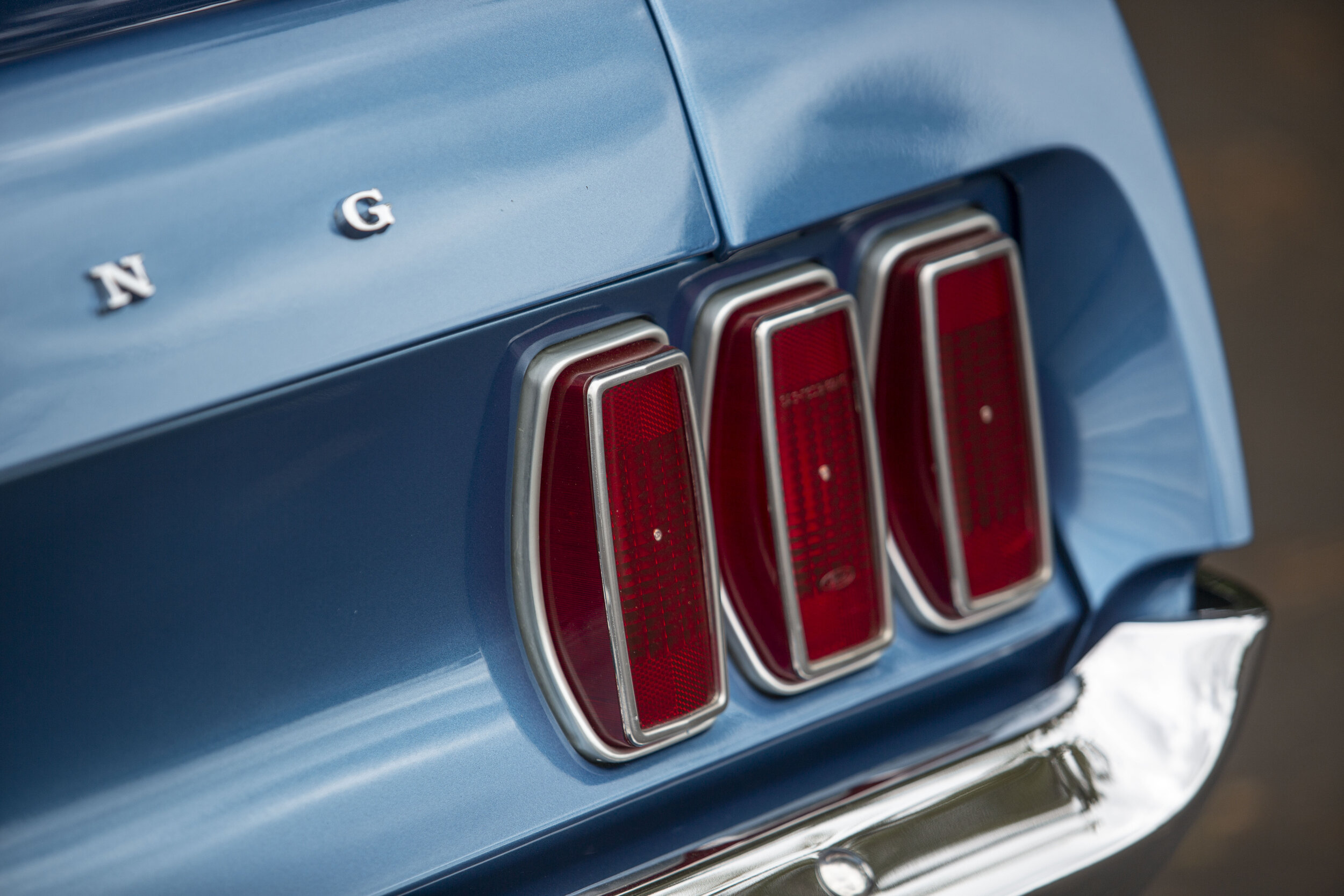
Mustangs got another new and even bigger bodyshell in 1971 but the looks were softened as Ford worried the car had become too aggressive looking. The new car was even longer and wider and its weight had gone up by a whopping 363kg over the first model. However, the interior was still quite cramped. Unsurprisingly, a large soft Mustang was not what the market wanted and fewer of the 1970 models were sold than of the ’69.
Ford boss Lee Iacocca, who oversaw the creation of the Mustang, said later, “The Mustang market never left us; we left it.”
Worse was to come. In 1973, Ford launched the second generation of Mustangs, this time based on the Ford Pinto platform. Smaller, true, but also underpowered as American car makers struggled to cope with the fuel crisis and emissions regulations. For fans of the original, Mustangs had lost both their lean good looks and their mojo. While successive generations have their devotees, some would say Ford never got it quite so right again.
BACK FROM THE BRINK
Happily, there are plenty of ’60s Mustangs around and more are being rescued by people like Mark. As is the fate of many old sports coupés, Mark’s car ended its American days in the hands of a student who didn’t splash the cash. Mark bought it as a non-runner with around 97,000 miles on the clock. It had a blown head gasket. That’s still the mileage, fresh from its restoration, so Mark reckons it should be nicely run in when the clock trips over to zero.
“It was pretty rough,” he explains. He had the car stripped and bead-blasted and a panel beater in Wellsford prepared and painted it, in 1995–’96. Meanwhile, Mark steadily acquired bits for it. He even bought another Mustang as a project car before realizing he ought to finish the ’69 first. He says most of the work on this car has been done in the past five years and the decision to enter it in the concours, with encouragement from the Mustang club, gave him a target date.
Mark wants to thank Mike Cooke Panelbeaters in New Lynn for bringing the 20-year-old paint back to new condition, and his colleague at the engineering base, Wayne Carter, for his encouragement and advice.
Both Mark and Chris are new members of the Auckland Mustang Owners Club and both are full of praise for the support and enthusiasm they have found there. The club was keen to win the Teams Event, as the winner of that contest gets to be the host club for the following year’s Ellerslie Classic Car Show, and next year will be the 50th running of the event. Members came around to help prep the cars and pointed out — one with the aid of little Post-it notes — where the cars needed attention and what Chris and Mark needed to do to achieve a concours-standard car. It was an eye-opener for both of them.
As we chat, Chris pulls out a can of silicone spray and gives the tyres a fresh coat for the photos.
“You can’t do that for concours,” he says. “It has to be black boot polish” — after the wheels and tyres have been water blasted clean.

THE HEART OF THE MATTER
The view under the bonnet on both cars is a treat. Mark’s car features chromed rocker covers, which you could get as an option, with a chromed dipstick. Interestingly, when he bought it, his car had the chromed dipstick but not the covers. Mark says that could easily have happened at the factory, as assemblers would just grab what was available when necessary to avoid delays. You could also specify a chrome lid on the air cleaner. Mark’s is painted but it is resplendent in factory-fresh stickers.
That’s one of the joys of restoring Mustangs — as Ford made so many of them, anything and everything is still available or is being remade. Mark tells us that you can even buy brand-new bodyshells.
A tip Chris got from another club member was to open the bonnet when the car is on display.
After the Ellerslie Classic Car Show, Chris and Sue drove the car down to the Americarna show in New Plymouth.
“As soon as you open the bonnet, people come flocking round,” says Chris.
Sue says one man spent about three-quarters of an hour poring over their car, “and he said he didn’t even like Mustangs much; he was a Mini man,” she laughs.
She says she is glad she went along on the trip south, as it opened her eyes to why Chris lavished so much attention on the car. It was clear how much other people appreciated the effort owners put into their cars.
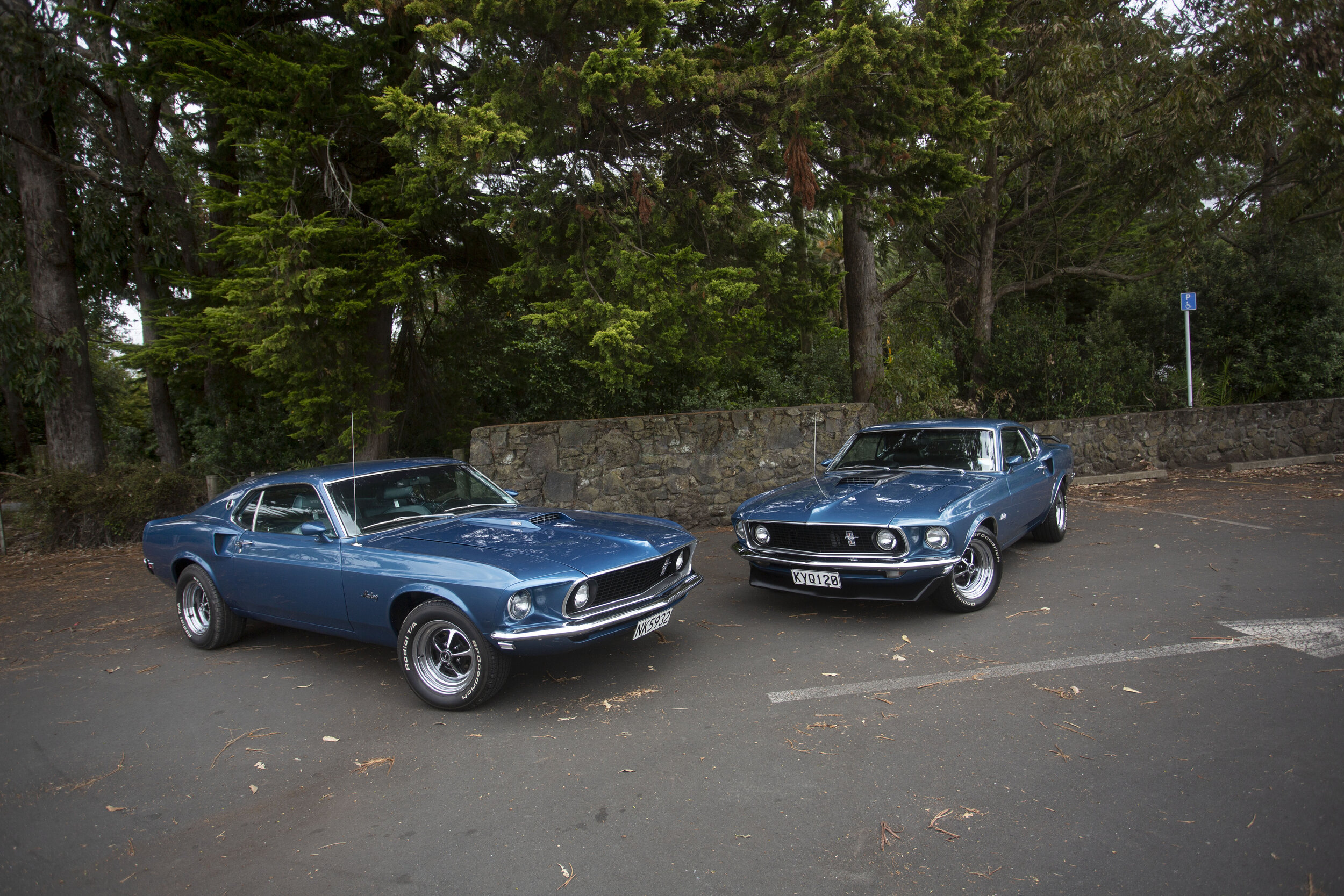


WEARY FROM WAVING
“I know how the royal family feels, having to wave all the time. We did a lot of driving around all the small towns and I just about waved my arms off. After six days I was quite glad to be going home,” says Sue.
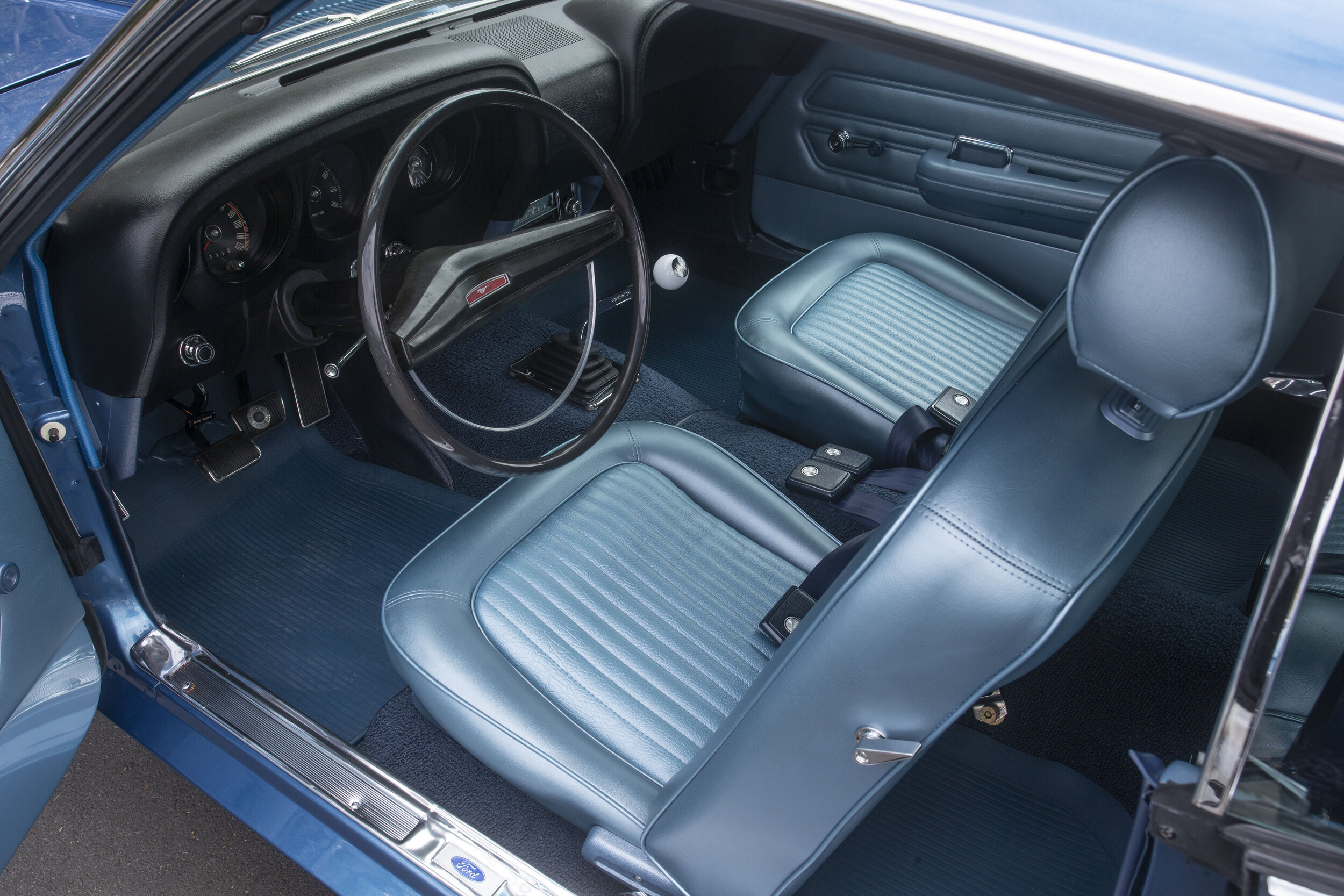
Chris isn’t surprised she grew a little weary: “She had an American flag and was hanging out the window flapping it at everyone! She was loving it!”

The conversation turns to preserving the pristine looks of a restored car. Chris had fitted little panels of clear film behind each wheel arch but still managed to pick up four stone chips. He says a friend had removable mudflaps on his car that he fitted for long journeys. Chris’s next trip with the car will be to Beach Hop in Whangamata.
“It’s there to be used,” he declares.
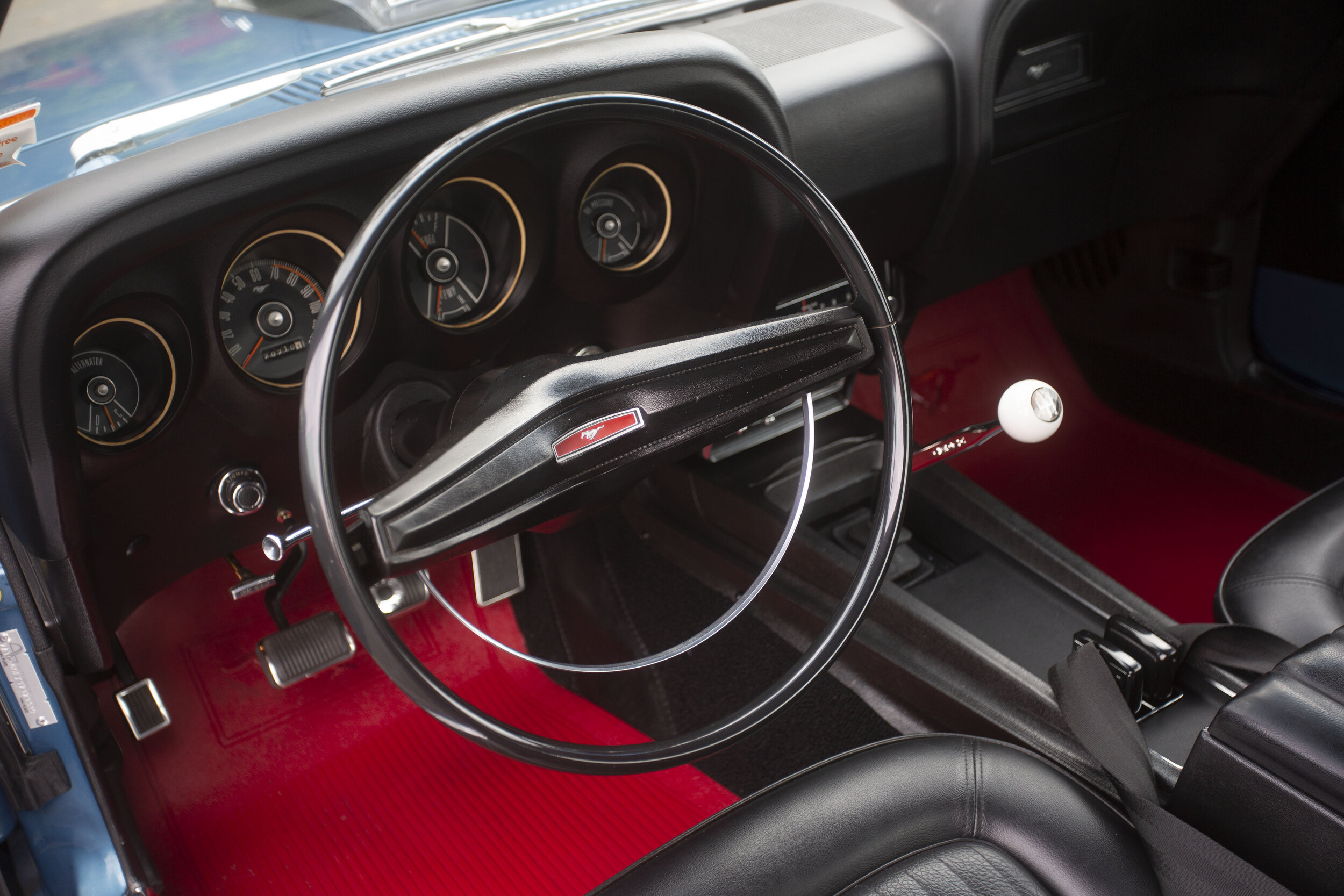
Mark is not yet sure how much he will use his car, as he admits taking it out at present is “a nervous drive”. It is not an exercise to be undertaken lightly, either. Mark didn’t refit the power steering when rebuilding the car, which makes three-point turns cumbersome. Also, the limited slip diff in the rear is currently set up too tight, which makes it act more like a no-slip diff. Moving off from a patch of gravel at the side of the road provokes a burst of wheelspin, a volley of shrapnel at the new paint, and a quiet curse from Mark.

With that big block engine rumbling and shaking, and the gearbox needing a little rocking to engage reverse on occasion, Mark clearly has a fight on his hands from both front and rear as he attempts to manoeuvre the feisty Mustang round the car park corral for the photos. His comment earlier about running the car in is more than just theoretical. This car harks back to a time when ‘running in’ was not much fun but essential. Yet the uncivilized behaviour from this factory-fresh car is no doubt part of the charm of cars of that era, and especially of muscle cars — an era that the ’69 Ford Mustang played such a big part in creating.

